Outboard Boat Motors: A Comprehensive Guide to Selection and Maintenance
Outboard boat motors are a crucial component of many watercraft, providing propulsion and steering capabilities for small to medium-sized boats. These engines are mounted externally on the boat's transom, enabling easy access for maintenance and repair. With a diverse range of options available, there is an outboard motor to suit various boating needs – from fishing trips to leisurely cruises.
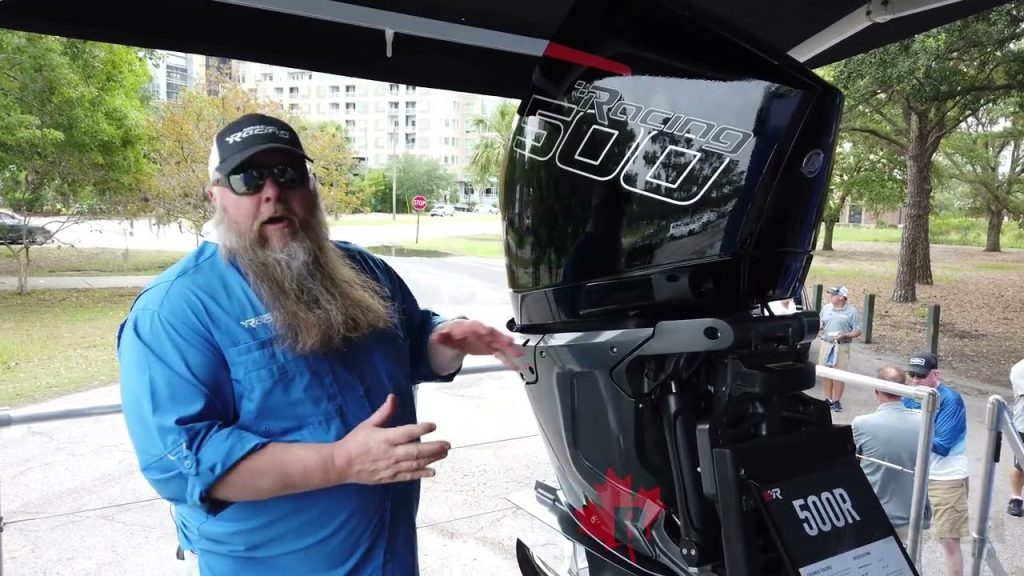
As the marine industry continues to evolve, notable brands such as Mercury Marine, Yamaha Outboards, and Tohatsu Outboards have developed a lineup of reliable, powerful, and efficient outboard motors. Ranging from 2.5hp to 600hp, these engines offer technologies such as fuel injection, FourStroke, and advanced control systems. Over the past few years, the market has also witnessed a surge in popularity of electric outboard motors, driven by environmental consciousness and regulations.
Key Takeaways
- Outboard boat motors provide propulsion and steering for small to medium-sized boats.
- Brands like Mercury Marine, Yamaha Outboards, and Tohatsu Outboards offer diverse engine options with advanced technology.
- Electric outboard motors are becoming increasingly popular due to environmental concerns and regulations.

Understanding Outboard Motors
Outboard motors are self-contained propulsion systems that offer power, reliability, and efficiency for a variety of watercraft. They consist of an engine, gearbox, and propeller, integrated into a single compact unit that hangs from the boat's transom. These systems have come a long way since their inception, with advances in technology enabling them to provide enhanced performance and environmental benefits.
Outboard engines commonly come in two forms: gas and electric. Gas outboard motors provide greater power and speed, making them ideal for larger boats or activities requiring faster speeds. Despite their power, these engines tend to be louder and produce emissions, affecting their overall efficiency. On the contrary, electric outboard motors offer a quieter and more environmentally friendly option. Though they may not supply as much power as their gas counterparts, they remain reliable for smaller boats and offer increased efficiency, as they require less maintenance.

Performance and efficiency of outboard motors are influenced by several factors, including the number of engine strokes. Outboard motors are designed to operate on either a two-stroke or a four-stroke process, each with its pros and cons. Two-strokes, for example, produce more power due to the simultaneous intake and exhaust strokes, providing a power stroke every revolution. However, they tend to be less fuel-efficient than four-stroke engines, which have distinct intake, compression, power, and exhaust strokes, leading to cleaner combustion and improved fuel economy.
In addition to engine type and stroke, the size and horsepower rating of an outboard motor play a crucial role in determining its performance. Generally, motors with higher horsepower ratings deliver more power and speed. However, it is essential to select a motor that is appropriate for the specific boat and its intended use, as too much power can compromise safety and stability, while insufficient power may result in poor performance and heightened wear on the motor.
Ultimately, understanding outboard motors and their various features allows boat owners to make informed decisions when selecting the propulsion system best suited for their needs. By taking into account factors such as engine type, stroke process, size, and horsepower rating, individuals can optimize the performance, efficiency, and reliability of their marine adventures.

Popular Brands of Outboard Motors
In the world of outboard motors, there are several popular brands that stand out for their performance, reliability, and innovation. In this section, we will explore five of the top brands in the market: Mercury Outboard Motors, Suzuki Outboard Motors, Yamaha Outboard Motors, Honda Outboard Motors, and Tohatsu Outboard Motors.
Mercury Outboard Motors
Mercury Marine is a reputable brand that offers an extensive range of outboard motors, including the high-performance Mercury Racing 450r, the powerful Verado, and the efficient FourStroke series. Mercury is not only known for its racing motors but also for its Pro XS series for long-lasting performance, and Seven Marine, which adds the luxury element. They boast a range of sizes, with Verado models offering anything from 200hp to 600hp V12 engines, catering to a wide variety of boating needs.
Suzuki Outboard Motors
Another well-known brand is Suzuki Marine, producing reliable and powerful outboard engines that combine advanced features and fuel efficiency. Among their most popular models are the DF350A, DF25A, DF90A, DF350MD, and DF300BMD. The Suzuki DF350A, in particular, is recognized for its high-performance capabilities, thanks to its innovative technologies and design.
Yamaha Outboard Motors
Yamaha Outboards are synonymous with performance, reliability, and consistency, making them a popular choice among boaters worldwide. Yamaha offers a wide range of outboard engines, including the versatile V-Max SHO 115, the powerful 425 XTO Offshore, and the efficient Yamaha F250. Yamaha motors are known for their durability and top-notch user experiences, bringing high levels of satisfaction to customers.
Honda Outboard Motors
For boaters looking for impressive fuel efficiency and reliability, Honda Marine outboard motors are a popular choice. Honda provides a diverse range of engine sizes and horsepower options, covering almost every need. They also excel in design and innovative features, like the advanced Honda 105 Jet outboard motor, specifically engineered for shallow waters.
Tohatsu Outboard Motors
Tohatsu may not be as widely known as the other brands mentioned here, but it should not be underestimated in terms of performance and reliability. Tohatsu offers an extensive lineup of outboards, ranging from small 2.5hp engines to larger V6 motors. Their popularity is mainly due to their competitive pricing, lightweight design, and dependability, making them a viable choice for many boaters.
Each of these brands stands out for different reasons, but all are recognized for their quality, performance, and commitment to innovation and customer satisfaction. Whether you're searching for small outboards or more powerful engines, these five brands offer a comprehensive range of options for your boating needs.
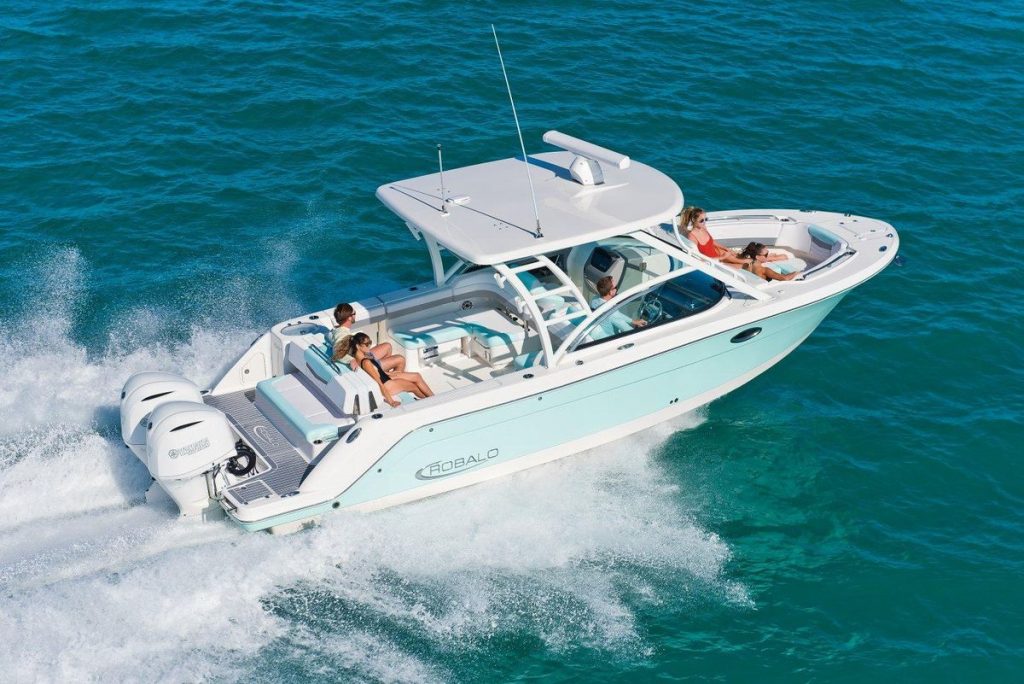
Key Parameters to Consider
Power and Speed
When evaluating different outboard boat motors, it's essential to consider their power and speed capabilities. Power is measured in horsepower (HP), and it impacts your boat's top speed, acceleration, and overall performance. In general, larger, heavier boats require more horsepower to achieve desired speed and acceleration levels. It's essential to choose an outboard motor that is compatible with your boat's size and weight, ensuring optimal performance and preventing damage.
Fuel Efficiency
As fuel prices rise and environmental guidelines tighten, fuel efficiency becomes an increasingly important aspect of selecting an outboard motor. Generally speaking, four-stroke outboard motors offer greater fuel efficiency compared to their two-stroke counterparts. Additionally, modern fuel injection systems improve combustion efficiency, contributing to cleaner emissions and better fuel economy. To make an informed decision, compare the fuel efficiency of different models by examining the manufacturer's specifications and conducting your own tests, if possible.
Innovation
Outboard motor manufacturers continually develop new technologies to enhance performance, convenience, and environmental friendliness. For example, some outboard motors feature battery-less electronic fuel injection (EFI), which provides smooth performance, easy starting, and improved efficiency without the need for a battery. When comparing outboard motors, assess whether such innovations will make a substantial difference for your boating experience.
Reliability
A reliable outboard motor is crucial for a hassle-free boating experience. Factors such as build quality, maintenance requirements, and the availability of replacement parts should be taken into account when evaluating reliability. Research the reputation of motor manufacturers and read customer reviews to gauge the dependability of their products. Additionally, familiarize yourself with the warranty and after-sales support offered by your chosen manufacturer, as this can be an indicator of confidence in their products’ reliability.
Price
While the cost may be a significant factor in your outboard motor decision, it's essential to strike a balance between affordability and the features you desire. Expensive motors often boast innovative technologies, better fuel efficiency, and enhanced performance. However, certain budget-friendly models may also offer satisfactory performance at a lower price point. Research and compare the performance, features, and pricing of various outboard motor models to make an informed choice that fits both your budget and requirements.
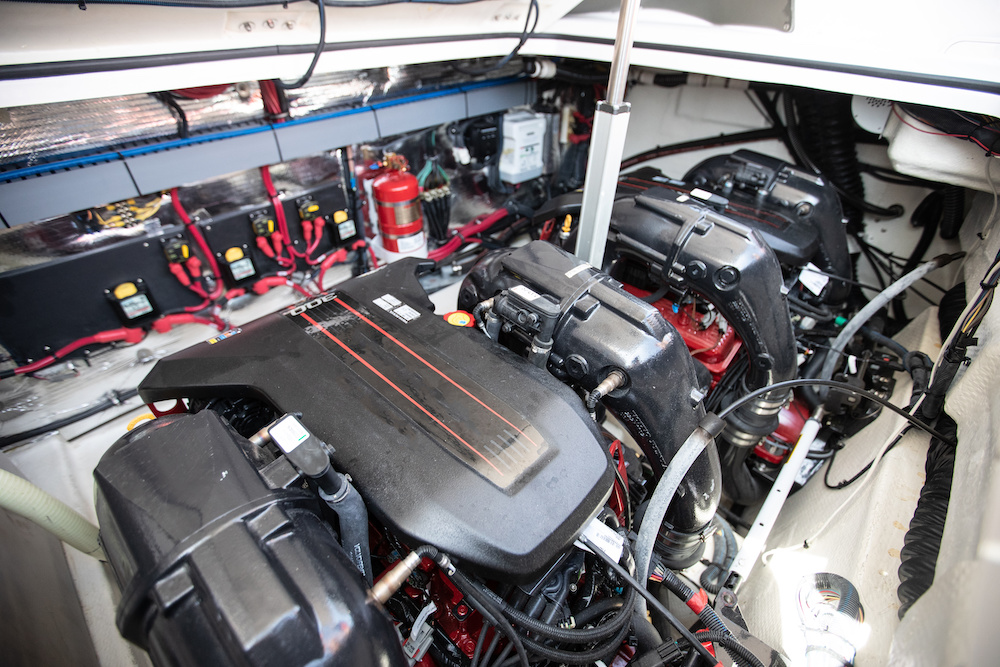
Engine Specifications and their Impact
Shaft Length
The shaft length of an outboard motor plays a crucial role in determining the height it can be mounted on a boat. It directly affects the motor's performance and can be available in different lengths depending on the size of the boat and the desired water-depth usage. A general rule of thumb is to choose a shaft length that allows the propeller to sufficiently submerge underwater for optimal performance.
Displacement
Displacement is an essential factor for outboard motors as it determines the engine's overall power output and fuel efficiency. Generally, higher displacement engines produce more power, but they also consume more fuel. Selecting the correct displacement for your boat motor mostly depends on the boat's size and the intended usage, such as high-speed water sports or leisurely cruising. Outboard motors typically come in a range of displacements, including small, medium, and large options.
Driveshaft
The driveshaft is responsible for transmitting the engine's power to the lower unit and eventually to the propeller, enabling boat movement. Driveshaft strength and durability are vital components for reliable engine performance. Outboard motors feature various driveshaft materials and designs that cater to different performance, durability, and price preferences.
Propeller
The propeller is a crucial part of an outboard motor, as it directly affects the boat's speed, acceleration, and overall handling. Propellers come in various sizes, materials, and blade configurations, each contributing to the boat's performance characteristics. Stainless steel and aluminum propellers are common choices due to their strength and lightweight properties. Understanding the boat's intended usage and desired performance can help narrow down your choice for the best propeller.
Engine Types
Outboard motors are available in two main engine types: two-stroke and four-stroke engines. Two-stroke engines are simpler, lighter, and usually offer better acceleration, but they may have lower fuel efficiency and higher emissions compared to four-stroke engines. On the other hand, four-stroke engines provide better fuel efficiency, lower emissions, and more consistent power delivery but may weigh more. The choice between the two engine types depends on your personal preferences and intended boating activities.

Outboard Motor Accessories and Add-Ons
Outboard motor accessories can enhance the overall performance, reliability, and convenience of your boat. These add-ons not only improve your boating experience but also ensure the longevity of your motor. Some of the essential outboard motor accessories include:
Trim and tilt systems: These systems allow you to adjust the angle of your outboard motor, which in turn impacts its performance and efficiency in various conditions. A trim and tilt system provides improved boat handling, reduced drag, and better fuel consumption.
Control cables and connectors: Proper control cables ensure smooth operation of your outboard motor. They transmit power from the throttle and gear controls to the motor. It's essential to choose the right size, length, and material for your control cables to ensure efficient performance.
Fuel tanks, lines, and connectors: Investing in high-quality fuel tanks, lines, and connectors is crucial for the safe and efficient operation of your outboard motor. Be sure to select compatible fuel system components for your specific motor.
Gauges and controls: Monitoring your outboard motor's performance is vital to ensure its smooth, efficient function. Gauges and controls help you keep track of vital statistics like engine temperature, fuel levels, and RPM. You can find a wide range of gauges and controls designed specifically for outboard motors.
Motor oils and lubricants: Regularly maintaining your outboard motor ensures its durability and performance. This includes using the right type of motor oils and lubricants designed explicitly for outboard engines. These products protect your motor from wear and tear, ensuring optimal performance.
In conclusion, investing in suitable outboard motor accessories and add-ons not only enhances your boating experience but also helps to maintain the performance and longevity of your motor. Ensure to choose high-quality and compatible components for your specific outboard motor.

Electric Outboard Motors
Electric outboard motors are becoming increasingly popular as a viable alternative to combustion engines for various types of boats, including kayaks, dinghies, canoes, inflatables, and sailboats. With advancements in technology, electric motors now offer comparable performance, while being environmentally friendly and cost-effective.
One of the key benefits of electric outboard motors is their efficiency and low maintenance requirements. Unlike their gas counterparts, electric motors do not produce emissions and significantly reduce noise pollution. This makes them ideal for use in protected waterways, as well as appealing to eco-conscious boaters.
There are several electric outboard motor options available with different power outputs. For instance, Torqeedo offers a range of models with power outputs equivalent to 3 HP up to 80 HP. Another company, Mercury Marine, has developed the Mercury Avator™ line, featuring electric outboard motors like the Avator 20e and 35e.
While the upfront cost of electric outboard motors can be higher than their gas counterparts, they tend to be more affordable in the long run when considering lower fuel and maintenance expenses. Additionally, some electric outboards are designed with the ability to easily swap batteries, enhancing their usability and flexibility for longer boating trips.
Another noteworthy company, Evoy, has developed the world's most powerful electric outboard motor, the Evoy Pro, further establishing the credibility of electric alternatives in the boating industry. As the market for electric outboard motors continues to grow, boaters can expect even more advanced and high-performing options to become available in the coming years.

Impact of Covid-19 on Outboard Motor Market
The arrival of Covid-19 in 2020 had a considerable effect on various industries, including the outboard motor market. The pandemic led to a decline in recreational activities worldwide, impacting the boat manufacturing industry and consequently, outboard motor sales1.
As lockdown and social distancing measures were implemented, production facilities experienced disruptions. Supply chains were affected, causing a slowdown in the manufacturing processes of outboard motors. This contributed to the reduction in the market size during the initial stages of the pandemic2.
However, as restrictions began to ease in 2021, the market for outboard motors started to gain momentum3. Gradual reopening of recreational activities and an increase in the demand for personal watercraft contributed to the recovery.
Although initially hindered by the pandemic, the outboard motor market is now expected to grow at a compound annual growth rate (CAGR) of about 3.79% during the forecast period of 2022-20274. This recovery demonstrates the industry's resilience and ability to adapt to new challenges.
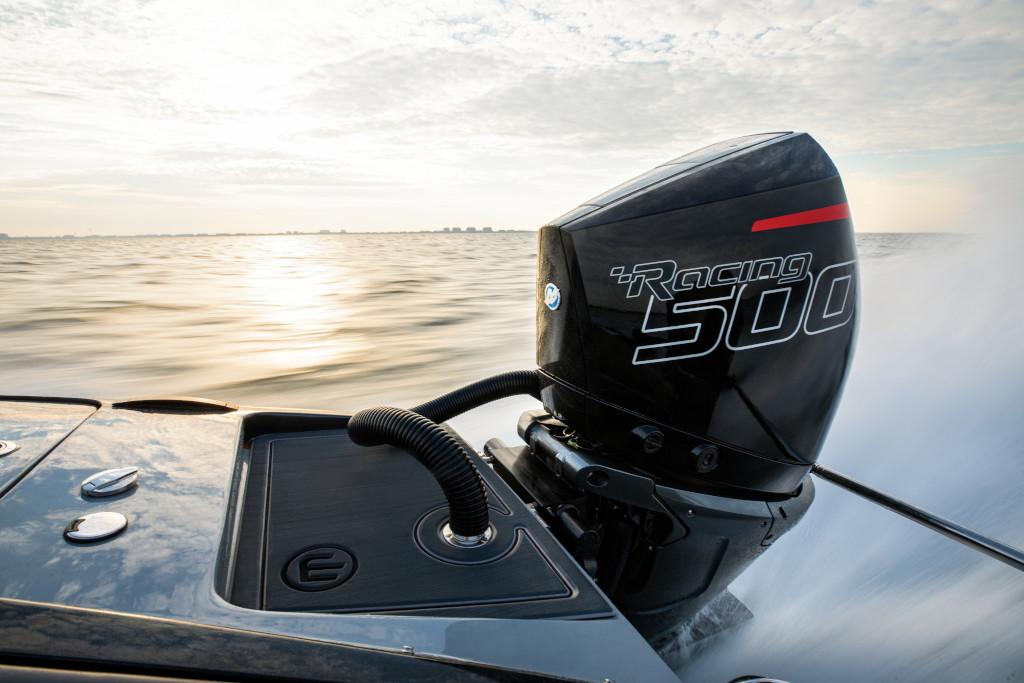
Advancements and Future of Outboard Motors
Outboard motors have come a long way since their inception, with significant improvements in technology, power, and efficiency. In the early days, outboard motors were basic, single-cylinder engines with hand-cranks. Today, modern outboards are computer-controlled, high-horsepower engines that offer a smooth and reliable boating experience.
As technology continues to advance, outboard motor manufacturers are constantly looking for ways to improve their products. One of the main focus areas is making engines more environmentally friendly by reducing emissions and exploring alternative fuels. Electric outboards, for example, have emerged as a promising technology with companies like Vision Marine creating the "world's most powerful electric powertrain".
Electric Outboards are gaining momentum in the boating industry as they offer numerous advantages over traditional gas-powered engines. They are quieter, produce no emissions, and require less maintenance. Additionally, they have the potential to significantly reduce the operation costs since electricity is often cheaper than gasoline.
Alternative Fuel Outboards, such as those using propane or biofuels, are another area of exploration for a cleaner and greener boating future. These fuel options can potentially reduce harmful emissions, ensuring a more sustainable impact on the environment. Furthermore, alternative fuels might offer improved fuel efficiency, making them an attractive option for cost-conscious boaters.
Innovation in outboard motor technology isn't limited to fuel sources. Advancements in materials, such as lightweight metals, are making engines more efficient by reducing weight without compromising strength or durability. Modern outboard motors are undergoing a digital revolution, with features such as computer-controlled ignition systems and digital throttle controls offering a more precise, user-friendly experience.
In conclusion, the future of outboard motors looks promising with an increasing focus on sustainability, efficiency, and user experience. As technology and innovation continue to drive the industry forward, boaters can expect cleaner, more powerful, and user-friendly engines.
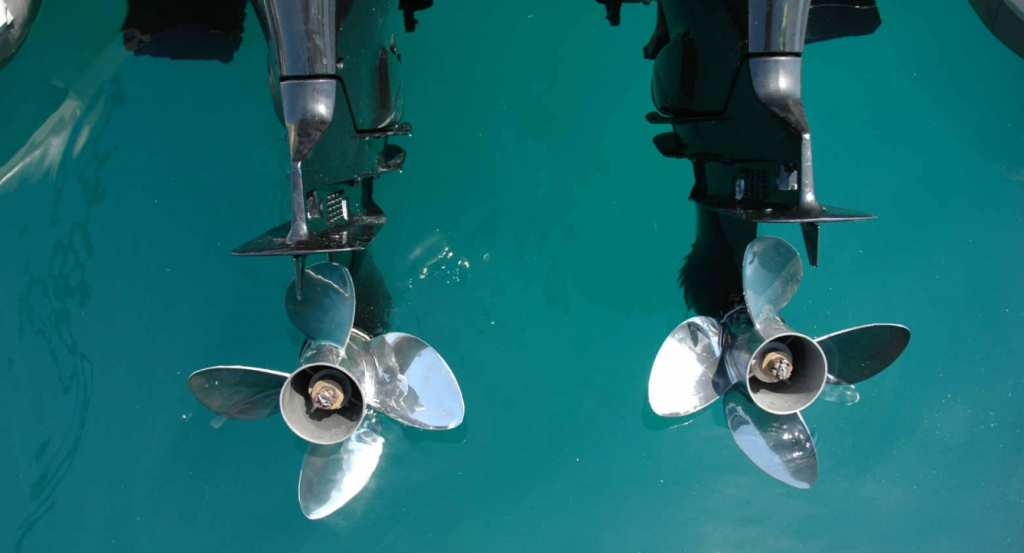
Conclusion
Outboard boat motors have come a long way, offering incredible improvements in performance, fuel efficiency, and environmental impact. With manufacturers like Mercury Racing, Yamaha, and Honda leading the industry, boat owners have numerous options that cater to a wide array of needs.
The legendary performance offered by some of the best outboard motors today, like the Mercury Racing 450R and the Evinrude E-TEC G2 300, provides boat owners with the power, speed, and efficiency they demand. These motors have been designed to provide a smooth and enjoyable ride with minimal noise, vibration, or emissions.
Moreover, maneuverability plays an important role in outboard motor selection, especially for those navigating tight waterways or seeking precision controls. Many models, such as the Yamaha F25 and Honda BF5, have made significant improvements to help maneuver boats easily and efficiently, ensuring a better overall boating experience.
Lastly, power-to-weight ratio is another crucial factor that boat owners consider when selecting an outboard motor. Modern outboards have focused on delivering high power without adding excessive weight to the boat. Lightweight motors ensure fuel efficiency and improve the handling of the boat. Examples of the best power-to-weight ratio motors are the Suzuki DF350A and Honda BF 250.
In summary, outboard boat motors today offer remarkable advancements in performance, maneuverability, and power-to-weight ratio. Choosing the right motor depends on the boat owner's requirements, preferences, and budget, ensuring an enjoyable time on the water.
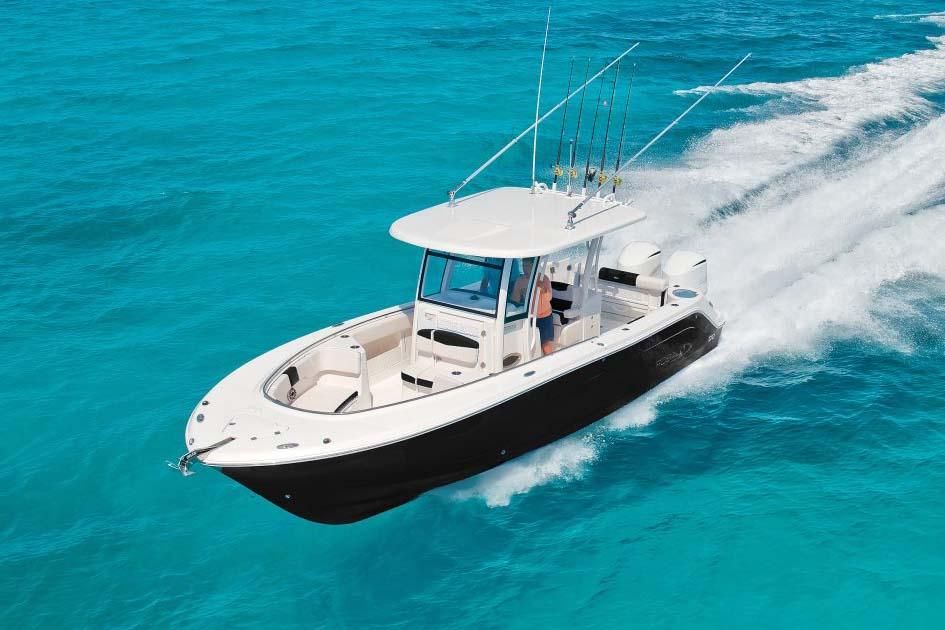
Frequently Asked Questions
What factors influence the cost of outboard motors?
There are several factors that can influence the cost of outboard motors. These include the motor's horsepower, type of engine (2-stroke or 4-stroke), brand, and additional features such as electric start or power trim. For example, higher horsepower motors or those with more advanced features will generally be more expensive than lower horsepower options or basic models. It's important to carefully consider your boating needs and budget when selecting an outboard motor.
What is the difference between 2-stroke and 4-stroke engines?
The main difference between 2-stroke and 4-stroke engines is the number of times the piston completes a power cycle within a single revolution of the crankshaft. In a 2-stroke engine, the piston completes a power cycle with every revolution, which results in higher power output but lower fuel efficiency. Conversely, a 4-stroke engine has a power cycle that occurs once every two revolutions of the crankshaft, offering better fuel efficiency but generally less power output.
How can I maintain an outboard motor for longer lifespan?
Regular maintenance is crucial to extending the lifespan of your outboard motor. Some basic maintenance tasks include changing the engine oil and filter, replacing the spark plugs, and checking the fuel system for leaks or damage. Additionally, it's essential to flush the engine with fresh water after each use, particularly in saltwater environments. Consult your owner's manual for specific maintenance guidelines for your motor.

What are the advantages of using a fuel-injected outboard motor?
Fuel-injected outboard motors offer several advantages over carbureted models. These include improved fuel efficiency, more reliable engine performance, and smoother throttle response. They also tend to produce fewer emissions than carbureted engines, making them a more environmentally friendly option. While fuel-injected motors can be more expensive upfront, the long-term savings on fuel costs may offset this difference.
How do different horsepower outboard motors impact boat performance?
The horsepower of an outboard motor has a direct impact on a boat's performance, such as top speed, acceleration, and handling. Higher horsepower motors generally provide better performance, allowing for faster speeds and more responsive maneuverability. However, they may also consume more fuel and create additional weight on the boat. It's essential to choose a motor with the right balance of power and efficiency for your boating needs.
What should I consider when buying a used outboard motor?
When purchasing a used outboard motor, it's important to consider factors such as age, hours of use, maintenance history, and any signs of damage or corrosion. It can also be beneficial to have a mechanic or professional technician inspect the motor before purchase. Additionally, consider whether the motor's horsepower and features match your boating requirements. Buying a used motor can be cost-effective, but it's essential to take these factors into account to ensure a reliable and enjoyable boating experience.
Footnotes
Charlie is Editor-in-Chief of Sea Magazine